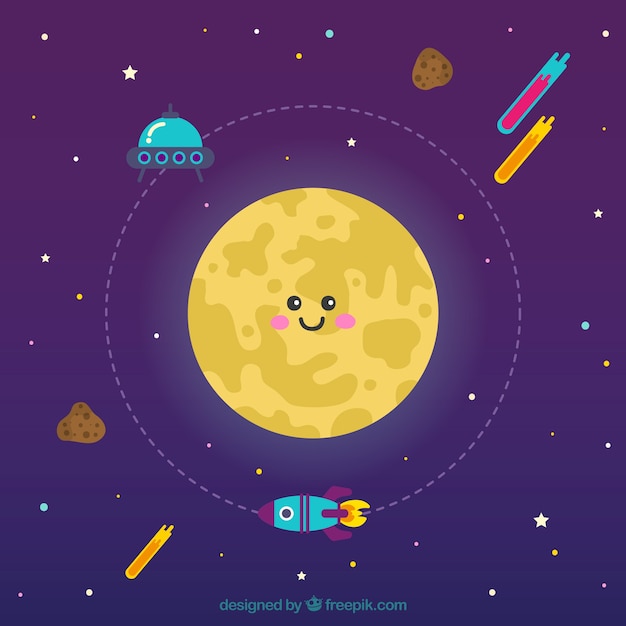Interesting Facts About Pluto for Kids

Did you know that Pluto used to be considered the ninth planet in our solar system?
Pluto is very small, about a quarter of Earth’s size!
It takes 248 Earth years for Pluto to orbit around the Sun.
Pluto is very, very cold, with temperatures reaching as low as -375 degrees Fahrenheit.
Unlike the other planets, Pluto has not been visited by a spacecraft yet.
Pluto’s surface is covered with ice and frozen nitrogen.
The discovery of Pluto was quite unique, as it was found by a young astronomer named Clyde Tombaugh in 19
8. Pluto has a large heart-shaped feature on its surface, called the Tombaugh Regio, in honor of its discoverer.
Pluto has five known moons: Charon, Styx, Nix, Kerberos, and Hydra.
The largest moon of Pluto, Charon, is almost half the size of Pluto itself!
Due to its distant location, it takes sunlight about 5.5 hours to reach Pluto.
Pluto is named after the Roman god of the underworld.
If you were on Pluto, you would weigh only about one-tenth of what you weigh on Earth.
Pluto’s atmosphere is very thin, composed mainly of nitrogen and some methane.
Since Pluto is so far away, it appears very faint in the night sky and is difficult to see without a telescope.
The average temperature on Pluto is around -375 degrees Fahrenheit.
Pluto has a reddish color, which is believed to be due to the presence of hydrocarbon molecules on its surface.
Interesting Facts About Pluto for Kids part 2
Pluto has a strange orbit that is tilted relative to the other planets, which makes it unique.
Despite being demoted to a dwarf planet, Pluto still holds a special place in the hearts of many space enthusiasts.
Pluto’s nickname used to be the ninth planet, but now it is often referred to as the dwarf planet.
Scientists believe that Pluto might have a subsurface ocean, although it is mostly frozen.
Pluto’s day (the time it takes to rotate once) is about 6.4 Earth days long.
The surface of Pluto has many craters, similar to the Moon’s surface.
The atmosphere of Pluto can expand and contract depending on its distance to the Sun.
Pluto is so far away that it was only discovered because astronomers were looking for something that was disturbing Uranus’s orbit.
Pluto is one of the objects in the Kuiper Belt, a region beyond Neptune where many icy objects orbit the Sun.
The New Horizons spacecraft flew past Pluto in 2015, providing us with close-up images and new data about the dwarf planet.
Scientists believe that Pluto’s heart-shaped feature might have been caused by a collision with another celestial object.
Contrary to popular belief, Pluto is not a frozen world of ice and snow; its surface is mainly composed of rock.
Despite being small, Pluto has a mountain range on its surface that is as high as the Rockies on Earth.
If you could stand on Pluto and look up at the night sky, you would see the Sun as a distant point of light.
Pluto orbits the Sun at an average distance of about 3.67 billion miles.
In 2006, the International Astronomical Union decided to reclassify Pluto as a dwarf planet.
There is still debate among scientists about whether Pluto should be considered a planet or not.
Pluto has a very thin atmosphere that freezes and falls to the ground as snow during colder periods.
Because it is so small, Pluto does not have enough gravity to pull itself into a spherical shape, resulting in its irregular shape.
The surface of Pluto is covered with a layer of methane ice, which gives it a reddish-brown color.
New Horizons discovered blue skies and water ice on Pluto during its flyby.
The journey from Earth to Pluto would take over nine years using current spacecraft technology.
The surface of Pluto is constantly changing, with ice formations and cracks appearing and disappearing.
The lowest point on Pluto is called Aviator Colles and is believed to be a frozen lake of nitrogen.
Pluto has seasons, just like Earth, but they last longer due to its long orbit.
If you were to walk around the equator of Pluto, it would be a journey of about 4,671 miles.
Pluto has a thin layer of methane, which gives it a distinct smell, similar to rotten eggs.
Thanks to the New Horizons mission, we now have a better understanding of Pluto, its moons, and its unique characteristics.

